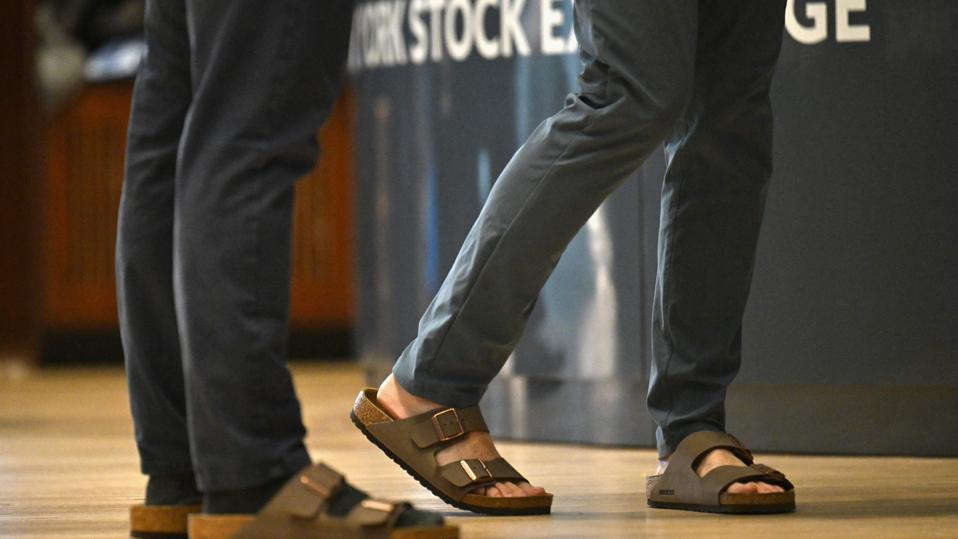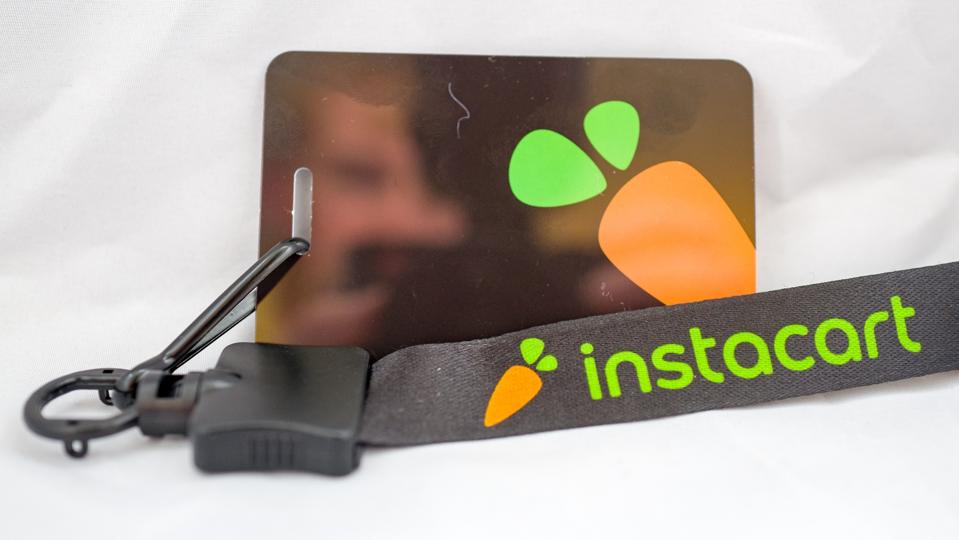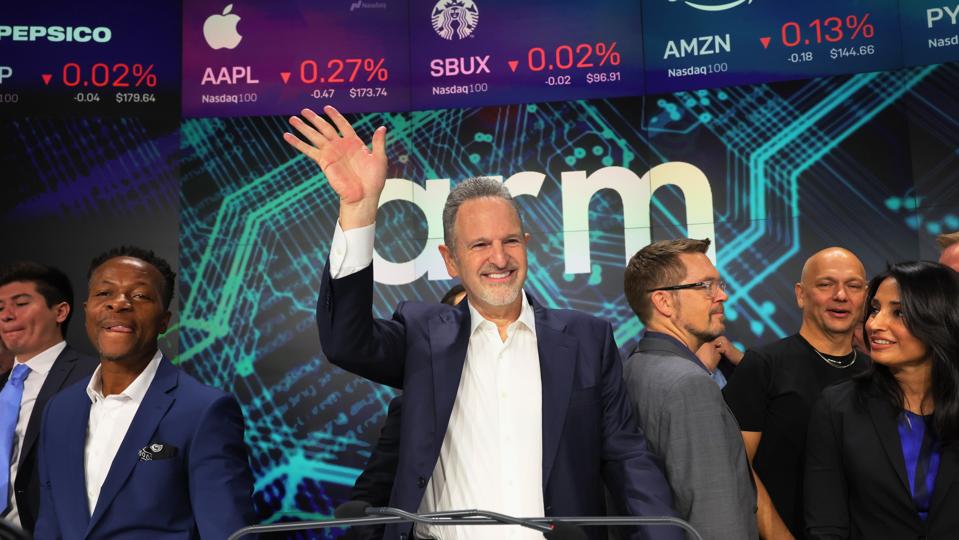Credulous retail investors are the biggest losers, according to new research.
By Brandon Kochkodin, Forbes Staff

Last year, executives at Bay Area broadband company Actelis Networks felt a hankering to go public. They fixed their eyes on the Nasdaq prize. But there was a snag: their stock, restricted to employees and early investors, was below the $4-a-share threshold required to trade on the exchange. The quick solution? A reverse split. They lumped every 46 shares into a single share, and voila, a $4 stock. They picked Friday the 13th in May 2022, of all days, for their launch into the big time.
What happened next is a textbook case, according to new research on microcap companies, defined as having less than $300 million in stock value, and their initial public offerings. Last year’s microcap IPOs almost without exception turned into dumpster fires, according to data from OTC Markets Group, the platform where some of the smallest companies trade before they “uplist” to exchanges like Nasdaq. Maybe the reason was bad luck or, more likely, the way incentives of the investment bankers who advise the executives and the executives themselves clashed with those of the credulous stock buyers hunched over their screens at home.
In a blog post titled “Lawful But Awful,” OTC says that by August 2023, the share value of an average microcap company that listed on an exchange in 2022 had fallen 65%. “This is something that’s been going on that nobody’s been talking about,” OTC Markets Group executive vice president Jason Paltrowitz told Forbes. “And it’s not just a 2022 phenomenon.” It’s also not just a few unlucky ones or a couple of slow movers messing up the average: 90% of the companies in the study are stuck with money-losing returns, OTC says. By comparison, the Dow Jones U.S. Micro-Cap Total Stock Market Index slid 30% from January 2022 through August 2023.
For Actelis, Friday the 13th proved lucky — at first. By the close of its first day on Nasdaq, Actelis shares soared to $24. It sounds like a win worthy of toasting the finest Champagne, but the company had handed out IPO shares at $4. That was a lot of potential cash to leave on the proverbial table. Still, Actelis pocketed $15.4 million, minus fees. Boustead Securities, its banker, grabbed $1.05 million with a potential bonus of $157,500 thanks to what’s called an over-allotment option — the right to sell more shares if the banker chooses.
This is where it gets interesting. As part of the deal, Boustead also got warrants — options to buy an extra 262,500 shares (“equal to 7% of the shares sold in this offering”) at the $4 offering price. With the stock rocketing to $24, do the math: flipping those shares could result in a potential windfall of $5.2 million, or five times what the bankers were paid in fees.
What was a gold mine for the bankers turned out to be the shaft for the retail investors. Fast-forward a week, and Actelis’ stock took a 37% nosedive, perhaps aided by a mad dash to cash in on those warrants while they were hot. Today, 17 months later, Actelis trades at about a dollar a share, down 95% from the initial first-day $24 close. The company didn’t respond to requests for comment. It said in March it was investigating anomalies in its trading, possibly from naked short sellers, who bet against the stock performance.
Retail Investors
Stock buyers, the ones who believed the advertising, are the ones who take the losses. The bankers certainly don’t. Forbes peered under the hood and found that underwriters booked fees of $100 million in aggregate from the 91 deals referenced by the OTC Markets research. A meaty $43 million was gobbled up by just five outfits guiding half the IPOs: Boustead, EF Hutton Group, Aegis Capital, ThinkEquity and Maxim Group. None of them responded to Forbes’ requests for comment.
TALE OF THE TAPE
These five banks did the most microcap IPOs in 2022
Fees are just one way the bankers were compensated. Fifty-eight of the 91 deals in the OTC Markets analysis featured warrants as an added perk. As banks exercise the warrants, they dilute shareholders, driving stock prices down. Essentially, when bankers cash in, existing shareholders get a thinner slice of a shrinking pie. And it’s all legal.
“It’s primarily happening on Nasdaq,” OTC’s Paltrowitz told Forbes. “Something we’ve been fighting for a long time is this perception that OTC is where all these fraudulent small caps, where all that activity happens. But really, it’s happening in plain sight on an exchange. And it’s the credibility of being on an exchange that somehow allows all of this stuff to happen. All of these deals follow the same pattern. It’s just wash, rinse, repeat.”
For 81 of the 91 companies in the OTC Markets Group study, Nasdaq was the exchange of choice. Nasdaq declined to comment.
Institutional Players
That’s not to say that the underwriting banks are the only ones pushing to make this happen. The executives who run the companies have various reasons for going public: raising capital for their businesses, making money for themselves, the prestige of being part of an exchange and the thrill of ringing the opening bell. There’s also the ability to attract big institutional players to their ownership orbit.
The merits of having the big guns buy your stock are stark after a company spends time trading on OTC Markets, which is less formal, has no middleman and carries with it a reputation for being edgy. Retail investors, the kind who trade at home, account for about 60% of OTC Markets volume. They can be a fickle bunch, often swayed by short-term hiccups, a report on social media or the financial flavor of the week, making them more of a wild card for companies trying to maintain steady stock values.Institutional ownership, by contrast, often means a lower cost of capital and brings with it the kind of shareholders who anchor themselves for a longer-term journey. These institutions can provide stability to the stock price, acting as a counterweight against market turbulence.
Companies, especially the small ones, love the idea of big-shot investors jumping into their stock. But FactSet numbers show what a fantasy that can be. The median institutional ownership in the cohort of 91 microcap companies is just 4%.
Stock Flippers
Ivanhoe Electric, it should be said, deserves to toast some of that Champagne for attracting big investors and maintaining positive returns. The Vancouver, Canada-based company boasts 35% institutional ownership and it’s one of only five companies in the group of 91 with positive returns. Its stock was up 37% from its June 28, 2022, IPO through the end of this August. Unlike the bulk of its 2022 microcap peers, Ivanhoe trades on the New York Stock Exchange. Its underwriters were different, too; they included BMO Capital Markets, Jefferies Group and JPMorgan Securities.
Flip the page and look at a comparable group of stocks, at least in size, like the iShares MicroCap ETF, where 45% of shares are held by heavyweight investors. Clearly, just being on an exchange isn’t enough to entice the heavy hitters.“You know these [IPOs] aren’t being offered to institutional investors or to buy-and-hold retail,” Paltrowitz told Forbes. “They’re being sold to, in essence, unregistered stock flippers who see these deals coming. They might even short the stock in advance of getting discounted shares. The graphs all look the same. They throttle along, then they spike, and then they immediately drop. I won’t say it’s because of, but in large part, because [when] you stick Nasdaq on there everybody thinks, ‘Oh well, you’re on an exchange, these are perfectly good, credible transactions.’”
Jay Ritter, a University of Florida finance professor, goes even further. He asks why institutional stock buyers would even take a long look at one of these microcap IPOs. “When I look at the prospectuses, I can’t help but think that all these microcap IPOs go to retail investors,” Ritter told Forbes. “Institutional investors have no interest in these deals. I don’t know who’s buying. Is it classic boiler room operations? These are certainly companies in the category of ‘sold not bought.’ A sophisticated investor isn’t going to touch these things.”
So-called boiler rooms use hard-sell tactics to peddle shares to unsuspecting traders, then dump their own when they reach a certain profitable level. Underwriters might talk a good ballgame to the executives looking to take their companies public, but that doesn’t mean the executives all have pure motives, Ritter said.
“This isn’t your normal mix of companies,” he told Forbes. “There might be an occasional company with an over-optimistic entrepreneur who thinks that with a little luck they’re going to make it, but more commonly the idea is to raise $10 million and then pay themselves an annual salary of $500,000 for two years while burning through the money.”
When it comes to Actelis’ numbers, Ritter was pretty accurate. The company CEO’s combined compensation for 2021 and 2022 was just over $1 million.
This post originally appeared on Forbes.com


